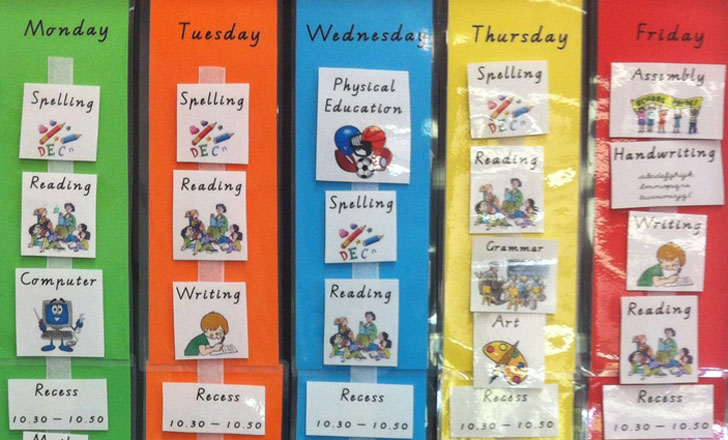Visual supports
Visual supports are a communication tool that can be used with autistic people. They can be used in most situations, are adaptable and portable.
Visual supports can help to:
-
provide structure and routine
-
encourage independence
-
build confidence
-
improve understanding
-
avoid frustration and anxiety
-
provide opportunities to interact with others.
They can make communication physical and consistent, rather than fleeting and inconsistent like spoken words can be.
Types of visual support
A wide range of items can be used as visual supports. For example:
-
tactile symbols/objects of reference, eg swimming trunks, packaging, food labels
-
photographs
-
short videos
-
miniatures of real objects
-
coloured pictures
-
plain squares of coloured card
-
line drawings
-
symbols
-
written words.
These can be real objects, printed images, or on a smartphone, tablet or computer.
Uses of visual supports
Visual supports can be used in a range of ways, for example:
-
as a single message, eg the person takes a yellow card from their pocket when they need to go to the toilet, or a puts purple card on the board when they’re feeling stressed
-
in combination to create a daily timetable, schedule, sequence or reward chart
-
to make a choice, eg the person can put the trampolining symbol in the ‘afternoon’ area of the board
-
to illustrate a social story or comic strip conversation.
Examples of visual supports
-
Basic symbols to allow a person to express an opinion, eg by putting a thumbs down symbol next to that one of today’s activities, to show they didn’t enjoy it
-
Different coloured table cloths, eg white for dinner time, blue for colouring time
-
Easy News magazine with visuals to support understanding
-
Key phrase symbols (eg ‘I want’, ‘What’s that?’)
-
Communicating ‘No’
-
Photos and maps to explain that mum is at work, or my new school is in Glasgow
-
Task sequence instruction strips for using the bathroom
-
Time tackers to help with starting and finishing activities, and transition between activities
-
Visual scripts for social situations.
Top tips
Make visual supports portable, durable, easy to find, personalised and consistent.
Portable
Make the visual supports portable by:
-
using a visual supports app on the person’s tablet
-
storing photos and pictures on the person’s smartphone
-
putting symbols, pictures and schedules in a folder for the person to carry with them.
Durable
-
Laminate printed visual supports
-
Back up any app, photos and pictures you use on a smartphone, tablet or computer.
Easy to find
Ensure that visual supports are easy to find, for example by:
-
placing them in prominent places at eye level
-
putting them on an actual object
-
putting a single symbol in the person’s pocket
-
distributing them throughout particular environments, eg objects and areas in the classroom and at home could be labelled
-
putting a shortcut to them from a tablet home screen
-
attaching symbols to boards so that people know where to go to look at them - you could also use Velcro strips to attach symbols to a board, meaning schedules can be easily altered, eg activities removed once completed.
Personalised
Visual supports are very personal and what works for one person may not work for another. Use the person’s special interest, eg make a visual timetable in the shape of a rocket.
Remember that some autistic people have difficulties generalising, eg they may not realise that a Hula Hoop packet symbolises all crisps.
It can sometimes be helpful to use more than one type of visual support, but always introduce visual supports gradually. Start with one symbol and then build up a collection.
Consistent
If using pictures, once you choose a type or style (for example, line drawings), use it consistently. Ask family members, friends, teachers or support workers to use the same visual supports consistently.
Useful resources
There are lots of pictures you can download or buy as printed images and apps that you can use. Some examples are listed below. Inclusion does not mean that the National Autistic Society has endorsed them. You can search our Autism Services Directory or ask the community for suggestions of others.
You should always check the terms and conditions relating to the use of images that you download and any costs involved.
- Autism app reviews
- Colour coding for learners with autism, Adele Devine
- Colourful semantics
- Do2learn
- Tom Tag versatile picture schedules
- Go talk now
- Makaton
- Microsoft Word
- PECS – Picture Exchange Communication System
- Symbol world
- Tom Orr Accessibility by Design
- Widget
- Widget Health
- The Play Doctors


More information
Gerhardt, P, Cohen, M. (2014) Visual supports for people with autism: a guide for parents and professionals. Woodbine House






